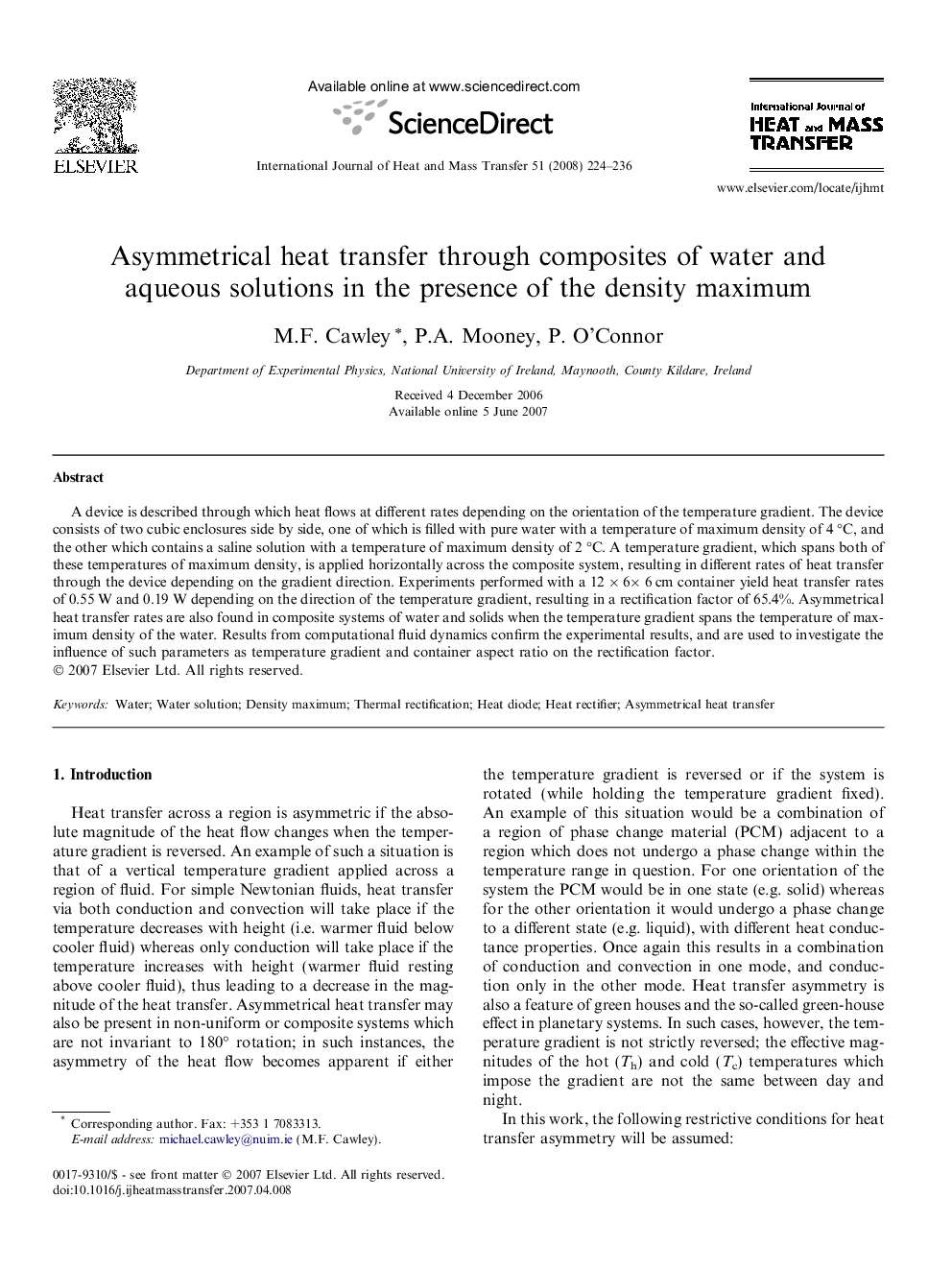| Article ID | Journal | Published Year | Pages | File Type |
|---|---|---|---|---|
| 660904 | International Journal of Heat and Mass Transfer | 2008 | 13 Pages |
A device is described through which heat flows at different rates depending on the orientation of the temperature gradient. The device consists of two cubic enclosures side by side, one of which is filled with pure water with a temperature of maximum density of 4 °C, and the other which contains a saline solution with a temperature of maximum density of 2 °C. A temperature gradient, which spans both of these temperatures of maximum density, is applied horizontally across the composite system, resulting in different rates of heat transfer through the device depending on the gradient direction. Experiments performed with a 12 × 6× 6 cm container yield heat transfer rates of 0.55 W and 0.19 W depending on the direction of the temperature gradient, resulting in a rectification factor of 65.4%. Asymmetrical heat transfer rates are also found in composite systems of water and solids when the temperature gradient spans the temperature of maximum density of the water. Results from computational fluid dynamics confirm the experimental results, and are used to investigate the influence of such parameters as temperature gradient and container aspect ratio on the rectification factor.
